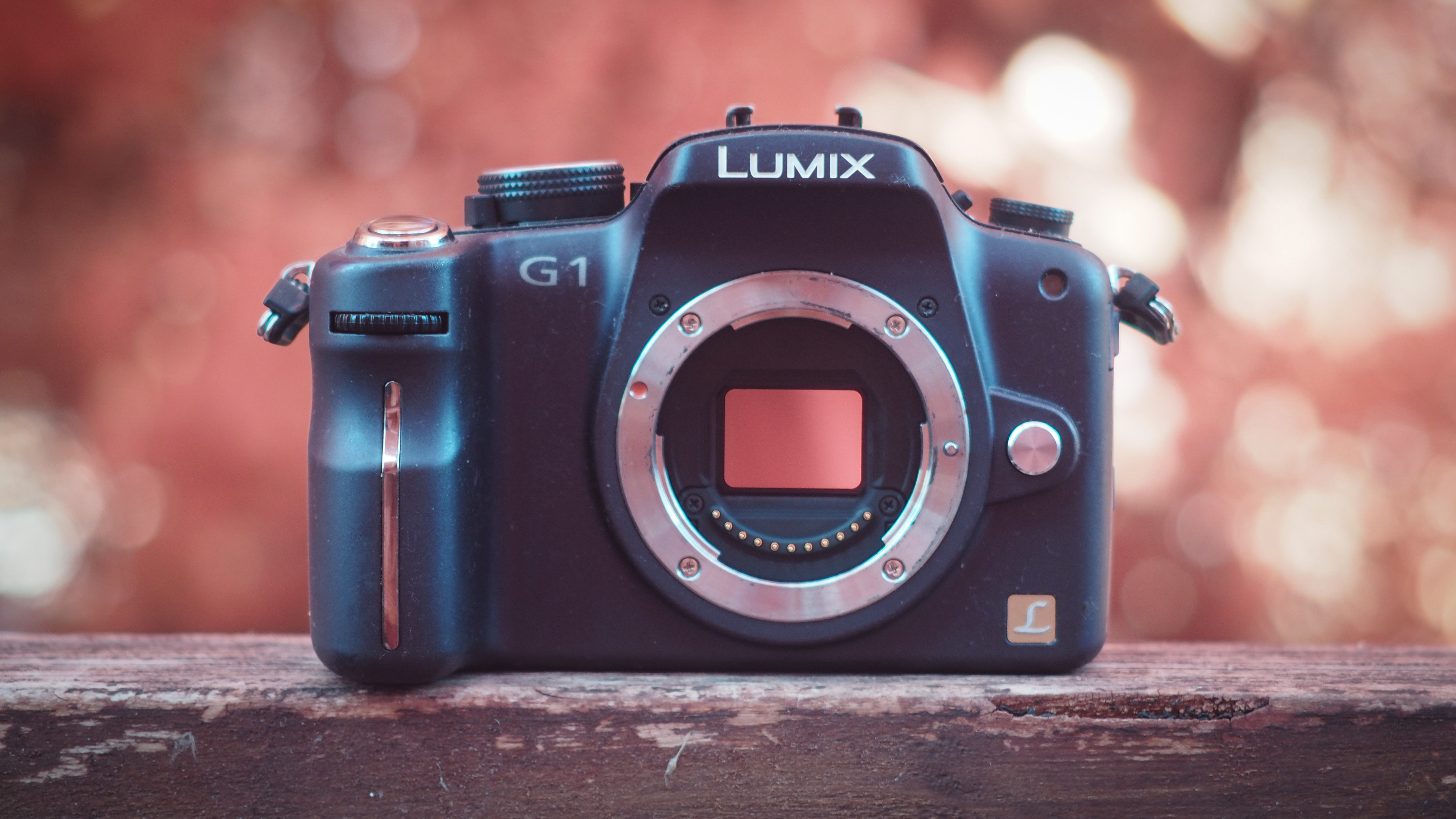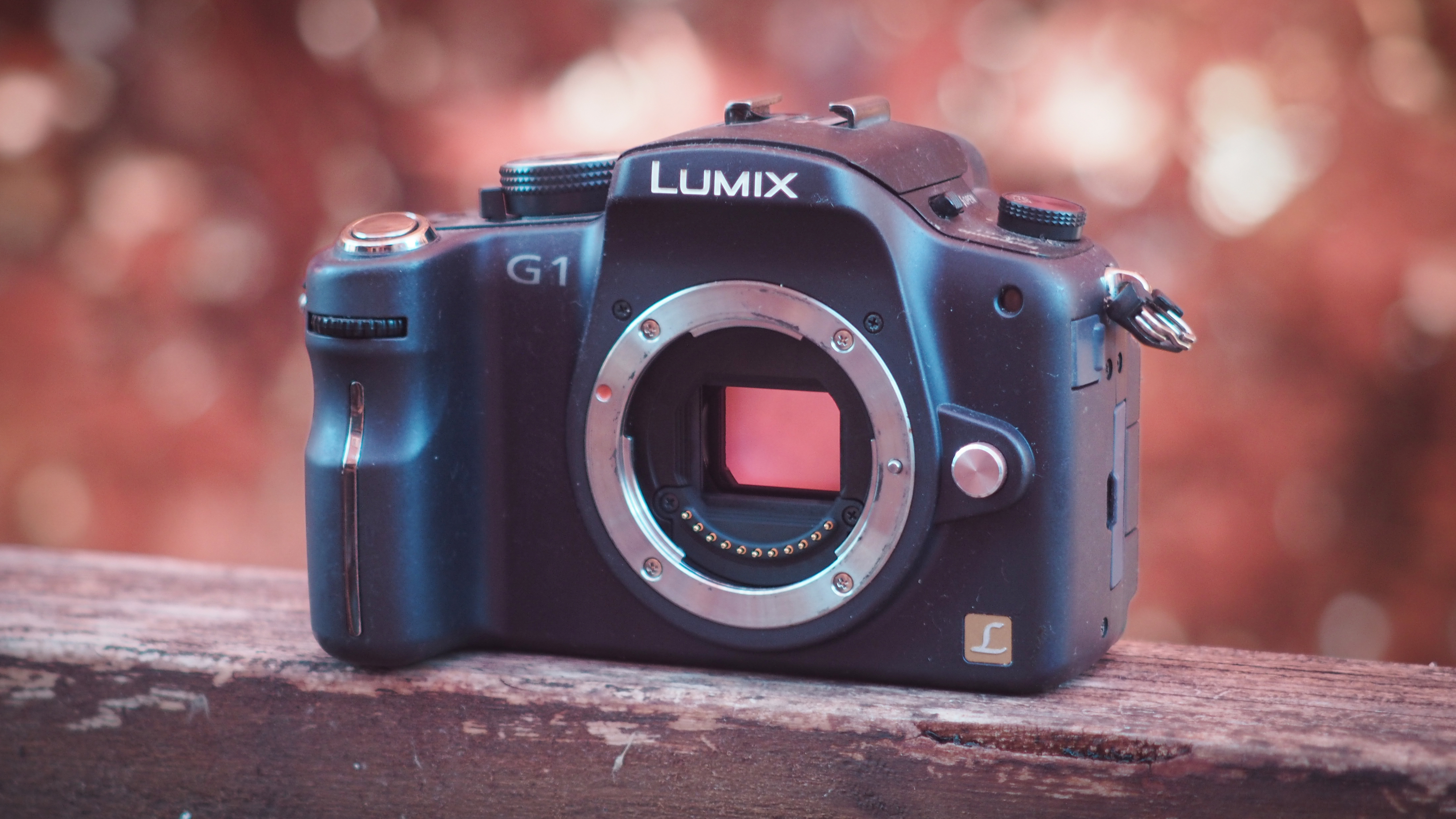The world's first mirrorless camera launched 17 years ago today! Here it is… but is it still any good?
Happy birthday to the world's first ever mirrorless camera, which was released 17 years ago! So, what does it look like with 2025 eyes?

Today is a day to celebrate, because it's the 17th birthday of the world's first mirrorless camera! Yes, 17 years ago the world of imaging was irrevocably altered by a camera that pioneered the future of the way photo and video would be captured.
But this groundbreaking, history-making, industry-changing camera wasn't a full-frame powerhouse – nor did it have an APS-C sensor. And in spite of the misnomer that it was Sony that changed the industry when it went mirrorless, the birthday boy isn't a Sony camera either.
In fact, the world's first ever digital mirrorless camera was a Micro Four Thirds camera: the Panasonic Lumix G1. I happen to own one, so I put together a little video to give you a guided tour and show you what it's all about:
ABOVE: Watch my thoughts on the first ever mirrorless camera
Before anyone gets all high-horsey, yes – I know all about the Epson R-D1 and the Leica M8. However, while they were indeed cameras without mirrors, I don't consider them to be true mirrorless cameras as they still featured optical finders rather than being dedicated live view devices.
As such, they're no more "mirrorless" than a Polaroid camera, or a phone camera, or an old compact camera. (At least in my opinion. And this is my opinion piece, after all.)
So then, the Lumix G1. Launching way back in September 2008, the cameras at the time consisted of chunky full-frame DSLRs like the Canon EOS 5D Mark II, along with entry-level APS-C DSLRs like the Canon EOS Rebel XTi / 400D.
The best camera deals, reviews, product advice, and unmissable photography news, direct to your inbox!
The G1 offered one thing that neither of those – nor any other of its rivals – could match: size. Or, rather, lack of it, which was the original promise of mirrorless cameras back in the day: smaller size without compromise. And indeed, the G1 is just a fraction of the size and weight of a DSLR.
At its heart was a 12.1MP image sensor, capable of a maximum sensitivity of ISO3200 and a top continuous shooting speed of 3fps, with a 23-zone contrast-detect autofocus system, 1.44 million-dot electronic viewfinder, 460,000-dot fully articulating TFT screen, 25 scene modes and a pop-up flash.
What it did not feature, however, was any video capability whatsoever – which is surprising in retrospect, given that video is one of mirrorless' clear strengths, and knowing how Panasonic would leverage its entire camera business around video in the years to come.
Also missing was a touchscreen, which combined with the lack of joystick makes moving AF points around the screen a slightly clunky process – particularly given that the autofocus needs lots of handholding to get the most out of it.
It goes without saying that autofocus has come a long way since 2008. Even if you take subject recognition and phase detection out of the equation, it's still a bit of a system shock getting used to the ways of old contrast detect tech. But so long as you don't make the mistake of trying to photograph anything moving, you soon get to grips with it.


The camera's design and layout is a little odd, understandably, as Panny was still trying to figure out where to put all the knobs and dials. There is lots of wasted space on the top-left plate, which is monopolized by a focus selector (and the flash pop-up button), while the top-right boasts a mode dial that is hilariously bloated with all the scene modes.
The rear screen is what really dates the camera, though; between its meagre resolution and grimy TFT technology, it makes you wonder if you need an eye test when trying to see if your images are sharp. Still, at least it's fully articulating.
Pretty much everything else, though, holds up remarkably well. For a 15-year-old, first-generation, 12.MP image sensor, the G1 still takes a great photo – and you can see plenty more images in my video.
Yes, that ISO3200 ceiling stings a bit – and images begin to degrade pretty severely when you start pushing the ISO – but I would be more than happy to use this camera for everyday imaging, social media shooting, and anything where I didn't need the ridiculous resolution of a modern camera.
Obviously there are things you miss on a camera this old. The 1/4000 sec maximum shutter speed can be limiting if you're working in bright conditions. The lack of silent shutter takes you by surprise, especially given that the shutter is louder than you'd expect. And the lack of IBIS is a bit jolting – especially since it has long been a calling card of Micro Four Thirds bodies.
Clearly the biggest omission, though, is the lack of video – particularly given how perfect mirrorless is for it, and how Panasonic would build its empire around video capability in the years to come.
Still, other than those quirks, I have a lot of fun with the Panasonic Lumix G1. I'm not going to do anything daft like recommend you go out and buy one; pretty much any mirrorless camera released since 2008 is going to serve you far better than this one.
However, if you ever have the opportunity, I would highly recommend that you try one out. It's a fun history lesson and it shows you just how far mirrorless cameras have come – and it also serves as a reminder of just how far ahead of the game Panasonic really was.
You might also like…
To see how far things have come, check out the best Panasonic cameras and the best Micro Four Thirds cameras of today. You can also see what we think of this camera's great grandson, the Panasonic Lumix G9 II, and its full-frame descendant, the Panasonic Lumix S1II.

James has 25 years experience as a journalist, serving as the head of Digital Camera World for 7 of them. He started working in the photography industry in 2014, product testing and shooting ad campaigns for Olympus, as well as clients like Aston Martin Racing, Elinchrom and L'Oréal. An Olympus / OM System, Canon and Hasselblad shooter, he has a wealth of knowledge on cameras of all makes – and he loves instant cameras, too.
You must confirm your public display name before commenting
Please logout and then login again, you will then be prompted to enter your display name.



